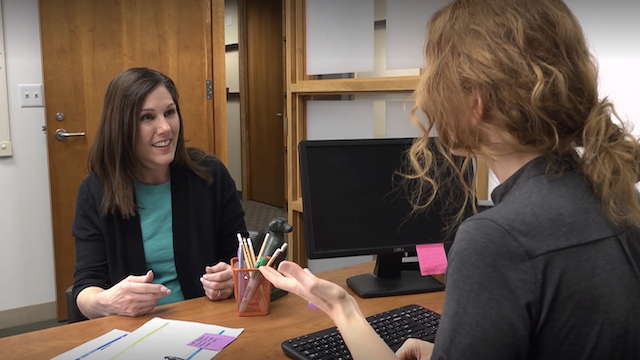5 Steps HR Can Take to Prioritize Internal Mobility

Understanding Internal Mobility and Its Importance
In an ever-shifting job market, business leaders must think about three critical considerations when it comes to their workforces.
1) Attracting the right job candidates needed to accomplish the organization's mission and objectives.
2) Retaining current workers.
3) Appropriately deploying employees—getting the right people in the right places.
It’s in the third area where a robust internal mobility program can make a significant difference.
Internal mobility is exactly what it seems—the movement of employees within an organization.
While past thinking focused largely on upward mobility, internal talent movement has become more fluid and inclusive to accommodate changing perceptions of career progressions and needs of diverse workers. Accordingly, desirable movement may be upward, downward, or lateral. Moves might be made for career advancements, transfers to different locations or departments, need or desire to work remotely, job rotations for leadership development, or other transitions.
For organizations, internal movement programs help keep costs and disruptions down by contributing to stronger retention rates (and lower turnover). For individuals, internal mobility programs demonstrate an employer’s commitment to workers, including their development and career advancement. LinkedIn calls mobility a “secret weapon when it comes to productivity, engagement and retention.”
Internal mobility applies to existing employees, but it also has important ramifications for talent acquisition. Talent outreach is strengthened when communications spotlight an organization’s commitment to career growth opportunities and the development provided to help people advance. In addition, interviews with job candidates that include assessment of their future potential for mobility can help HR create and fine-tune relevant internal movement programs.
For Many Organizations, Talent Remains a Top Challenge
Learn More.
At the end of July 2022, Bureau of Labor Statistics figures put the number of job openings at 11.2 million, while hiring totaled 6.4 million. Further, total separations—which includes quits, layoffs, and discharges—numbered 5.9 million. It doesn’t take a mathematician to see that those numbers equal talent shortages for many companies.
“What we are seeing is a fundamental mismatch between companies’ demand for talent and the number of workers willing to supply it,” says new global research from McKinsey that not only found candidates growing more particular, but also noted that four in 10 individuals are ready to quit their jobs in coming months.
From those who’d left jobs in the past year, researchers learned that multiple factors motivated departures. The usual culprits of inadequate compensation, uninspiring leaders, unrealistic work expectations, and lack of flexibility were key reasons for many workers. But the greatest percentage (41%) cited lack of career advancement and development.
On average, employee turnover caused by lack of opportunities for career growth is estimated to run
$49 million per year.
For Many Organizations, Talent Remains a Top Challenge
At the end of July 2022, Bureau of Labor Statistics figures put the number of job openings at 11.2 million, while hiring totaled 6.4 million. Further, total separations—which includes quits, layoffs, and discharges—numbered 5.9 million. It doesn’t take a mathematician to see that those numbers equal talent shortages for many companies.
“What we are seeing is a fundamental mismatch between companies’ demand for talent and the number of workers willing to supply it,” says new global research from McKinsey that not only found candidates growing more particular, but also noted that four in 10 individuals are ready to quit their jobs in coming months.
From those who’d left jobs in the past year, researchers learned that multiple factors motivated departures. The usual culprits of inadequate compensation, uninspiring leaders, unrealistic work expectations, and lack of flexibility were key reasons for many workers. But the greatest percentage (41%) cited lack of career advancement and development.
On average, employee turnover caused by lack of opportunities for career growth is estimated to run
$49 million per year.
5 Steps Toward Starting an Internal Mobility Program

A number of core considerations figure into establishing (or expanding) an internal mobility program. Five of the most important steps for HR include:
1. Do a culture check to determine if your company’s culture will support internal mobility. Cultures that encourage employees to be continuous and proactive learners are likely to afford an environment that nurtures career growth and movement. Emphasis on upskilling, knowledge sharing, and robust training and learning programs characterize company cultures in which development and career progression thrive.
2. See what your senior leaders think. Do company executives understand the value of internal mobility? Gaining leadership buy-in is vital for every initiative that will require resources and influential champions. HR and L&D (learning and development) must be prepared to make the business case for internal movement by presenting credible data on associated costs, projected savings and other benefits, and any other insights required to convince executives that mobility programs drive stronger talent and business outcomes.
3. Inventory employee skills and identify gaps. Compare skills your workforce has now against capabilities needed to move your organization ahead in the future. Last year, researchers revealed that 27% of HR and business leaders believe that LinkedIn knows more about their employees than they do. Only 10% of companies had created a database of current workers’ skills, and just 15% of leaders said their firms were good at discerning gaps between existing employee skills and those needed for future business operations. Creating a skills inventory will enable HR to act in the strategic interest of the organization while also laying the foundation for an internal mobility program.
4. Design career paths for your organization and define the training employees need to move ahead. Training and development to upskill employees for advancement or deployment to different positions offers excellent opportunities for HR to team with L&D. Together, these groups can design career paths that drive internal mobility programs and align with organizational objectives.
5. Establish an internal talent marketplace. Think: Indeed, LinkedIn, or ZipRecruiter, but within your organization. Increasing numbers of companies create internal marketplaces that serve as hubs for mobility, often utilizing technologies to facilitate skill-matching and communication about job openings, staffing needs for special projects, and other opportunities for movement.
Here are some video examples:
How Lack of Mobility Can Impact Inclusion and Retention
Scene from Unintenional Still Hurts: Overcoming Unconscious Bias
When it comes to internal mobility as a strategy to engage and retain talent there is much for HR to learn and apply creatively to support the objectives of employers. For expert assistance with training needs and planning, add Media Partners to your organization’s mobility design team.



